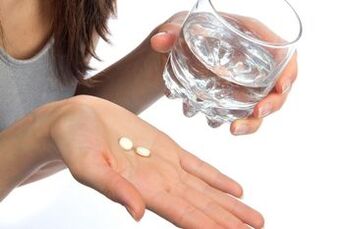Cystitis is a common urological disease in the world. In most cases, its development is based on bacterial damage to the inner epithelium of the bladder. Therefore, antibiotics for cystitis in women are widely used as drugs of choice for this pathology.
Antibiotics for acute cystitis
Before deciding which antibiotic to prescribe, an experienced doctor should carefully study and examine the patient. Blood and urine tests are recommended to diagnose acute cystitis. However, it is not always necessary to accurately determine the type of pathogen. Antibiotic therapy is initially carried out empirically, and a broad spectrum of drugs from the list of recommendations of the urological association is preferred. It should be noted that only a doctor has the right to prescribe any antibacterial drug, and self-treatment often leads to complications.
For a long time, the drug of choice has been a combination of sulfonamide and a dihydrofolate reductase inhibitor. However, long-term use of this drug led to an increase in the resistance of microorganisms to it and a decrease in the effectiveness of therapy. Therefore, modern European recommendations recommend the use of other antibacterial agents. First of all, they prefer:
- fluoroquinolones;
- nitrofurans;
- a drug based on phosphonic acid.
Treatment is carried out on an outpatient basis under the supervision of a urologist. Tests are repeated a few days after the start of therapy. The minimum duration of therapy for fluoroquinols is 3 days, nitrofurans - 7 days, and phosphonic antibiotics are taken only once.
Antibiotics for chronic cystitis
When the infection progresses to a chronic stage, empiric antibiotic therapy is unacceptable. Before prescribing antibacterial drugs, it is mandatory to conduct a microbiological examination of the urine. It also studies the resistance of a bacterial strain to specific therapeutic agents. This allows the attending physician to choose antibiotics for chronic cystitis that will be most effective for a particular patient.

There is an opinion that this form of pathology is rarely an independent disease. Therefore, such a patient should thoroughly examine not only the genitourinary organs, but also other body systems. Special attention is paid to possible immune disorders and foci of chronic infection in the body.
The list is dominated by fluoroquinolones or other spare drugs - tetracyclines, third generation cephalosporins, macrolides. The course of their reception lasts at least 7 days. At the same time, it should be supplemented with various non-drug treatment methods:
- surgical intervention for the presence of anatomical defects and / or foci of chronic infection;
- careful hygiene;
- choosing comfortable underwear;
- treatment of immune disorders;
- temporary abstinence from sex.
Prevention of recurrence of cystitis
Antibiotics are used not only to treat the acute stage of cystitis, but also to prevent relapses of the disease. It is recommended for patients who have had more than 2 exacerbations in the last 6 months.
There are several regimens for taking antibacterial drugs. The most common of them is the appointment of a long course of therapy in low doses during remission. Use one of the drugs from the group of fluoroquinolones (0. 2 g each), nitrofurans (0. 1 g each) or phosphonic antibiotics (3. 0 g each) every 10 days for 3 months.
If there is a connection between recurrent cystitis and sexual intercourse, the doctor recommends taking one of the above-mentioned drugs after coitus. In some cases, if symptoms appear, the patient can repeat the course of treatment himself.
However, after completion, you must undergo a urine test for bacteriological examination. It is also important to remember that the prevention of cystitis is effective only in the absence of abnormalities in the development of the urinary tract and other infectious processes in the body.
Selected antibacterial preparations for cystitis
A phosphonic antibiotic
The product contains phosphonic acid and is widely used in the treatment of bacterial infections of the lower urinary tract. The drug has a strong bactericidal effect against E. coli, enterococci, staphylococci, Klebsiella, Proteus and other pathogens. Available as powder packets.
This remedy should be used once 2 hours after a meal before going to bed. In this case, the contents of the bag must first be mixed in a small amount of water (about a third of a glass). A single dose for adults is 3. 0 g of the drug. In some cases, it is necessary to repeat the drug after 24 hours.
Phosphonic acid is practically not metabolized in the patient's body, and most of it is excreted by the kidneys. In this case, a therapeutic concentration of the drug is obtained in the urine, 4-6 hours after administration, which lasts for more than two days. In addition, the drug has a number of advantages:
- convenience of single use;
- low rates of side effects when used;
- limited contraindications (severe renal failure, children under 5 years of age);
- The drug is approved for use during pregnancy.
Nitrofurans
Nitrofurans, along with a phosphonic antibiotic, are the drugs of choice for acute cystitis. They have a bactericidal effect on most pathogens of this pathology. At the same time, the resistance of bacteria to nitrofurans remains low. The disadvantages of antimicrobial agents of this group include the frequent occurrence of side effects:
- dyspeptic disorders (nausea, vomiting);
- abdominal pain of varying intensity;
- dizziness;
- drowsiness;
- toxic effect on the liver and kidneys.
Take nitrofuran preparations 3 times a day, 100 mg. The duration of treatment is from 5 to 7 days.
Fluoroquinolones
This group of antibacterial drugs is a derivative of nalidixic acid. Fluoroquinolones have a bactericidal effect against a wide range of bacteria. When used internally, they quickly enter the bloodstream and begin to act within an hour. They are excreted from the body by the kidneys, which explains their wide use in urology.
The use of fluoroquinolones by children under the age of 18, pregnant and lactating mothers is prohibited. This is due to their negative impact on the formation of the musculoskeletal system. Contraindications also include a history of seizures, epilepsy, and individual intolerance. In recent years, fluoroquinolones are mainly used when phosphonic antibiotics and nitrofurans are ineffective, as well as in complex forms of cystitis.
Fluoroquinolones should be taken 2 times a day for 3 days.
However, recently these drugs are practically not prescribed for cystitis, because bacteria have developed resistance to the fluoroquinolone group in 60% of cases.
Cephalosporins
Cephalosporins are beta-lactam antibiotics with bactericidal action. Today there are 5 generations of these drugs, but only the first three are used in urology. Cephalosporins are considered one of the safest drugs among antibacterial agents.
The only significant contraindication to their use is the patient's hypersensitivity to beta-lactams (various allergic reactions develop). This allows the use of cephalosporins in young children, pregnant women and the elderly.
First-generation drugs are rarely used due to the resistance of microorganisms. The third-generation drug is prescribed for adults 0. 4 g 1 time or 0. 2 g 2 times a day. The dose for children depends on their age and body weight.
Tetracyclines
This group of drugs belongs to synthetic antibiotics. Tetracyclines have a bacteriostatic effect, that is, they inhibit the reproduction of microorganisms. Today, they are used to treat cystitis when standard therapy with phosphonic antibiotics and nitrofurans has proven ineffective.
Among the disadvantages of tetracyclines, their side effects are often noted: nephrotoxicity, dyspepsia, increased intracranial pressure, dizziness, inhibition of hematopoiesis, toxic hepatitis, etc. Also, drugs in this group disrupt the formation of bone tissue, so they should not be prescribed to children, pregnant and lactating mothers.
Take 0. 1 g once or twice a day. After taking the drug, it is recommended to additionally monitor kidney and liver function every 3 days.
Penicillins
The use of penicillin preparations for cystitis is limited. This is due to the decrease in effectiveness due to the development of resistance in microorganisms.
However, penicillins have high safety indicators, which allows them to be used for therapy in children and pregnant women.
Side effects often include digestive disturbances that disappear quickly after stopping the drug. The duration of use of penicillins for cystitis is up to 7 days.




























